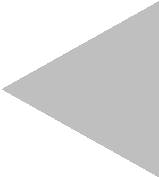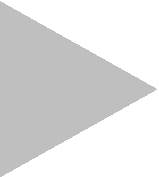WESTERN KANSAS WORLD — JANUARY 23, 1909


New type of Under Water Craft.

Denver.—Robert Lincoln, a negro inventor of this city, has perfected an entirely new type of submarine craft, which is to be brought to the attention of the war department by a number of capitalists who have become interested in the invention. If Lincoln's principles work out as well in the trial boat as they do in the model, there is no doubt that he has solved the problem of under water navigation. He gives the following details concerning his unique craft:
“My invention will not only prove an improvement in submarine navigation, but will introduce a new mode of propulsion, which may be applied to all water craft, whether running on or beneath the surface of the water,” the inventor says.
“It can be steered or controlled with as much ease and safety in rough as in calm seas. Observation can be taken as accurately while the boat is wholly submerged as when on the surface by a system of mirrors and refracted rays, only exposing an eight-inch pipe to view.
“The boat is agile, swift and durable. It will stand the pressure of the water at any depth. By the application of hydroplanes, keel, and turrets, we are able to do away with the propeller and its ponderous machinery, absolutely necessary to get speed from the style now in vogue.
“The revoluble hull is the greatest achievement of the invention. It has a spiral arranged blade encircling it from end to end, resembling a corkscrew. When this hull is set in motion upon its axis this blade coming In contact with a great surface of water, the forward movement of the boat is smooth.
The inner boat, being carried by the outer boat, does not come in contact with the water, and can offer no resistance to its speed or momentum.
“The inner boat is similar in construction and size to the outer, and constitutes the living apartments and affording a place to carry all the necessary appliances according to the usage of the boat. At a suitable distance from each end of the inner boat two turrets are constructed that rise at right angles to the inner boat to a distance of a foot above the greatest diameter of the revoluble hull. So that when running awash only a very small portion of the boat is exposed to view, and no vital parts.
The rear turrets constitute a pilot house and also afford an opening for ingress and egress to the inner boat, the pilot house being telescoped in the turret and closed with watertight fastenings when boat is submerged. The lower ends of the turrets are made flat and thin, and extend downward to a point sufficient to hold a solid iron keel, which allows the revoluble hull to turn between it and the inner boat. This keel steadies the boat latterly and adds stability to the inner boat, being rigidly connected at both ends.
“If in the rapid rotation of the outer shell the inner boat may have any inclination to deviate from a level, by working the hydroplanes of the one side adverse to those of the other, their action on the water will easily and effectively arrest such deviations. From both ends of the inner boat there is a conical prow extending and coming to a point which makes a most formidable weapon and can effectively be used in ramming other vessels. In these prows and in front of the forward turret and rear of the rear turret are torpedo tubes, using compressed air force.
“While the boat has been recom-mended for war purposes, its greatest service to mankind will be as a life preserver. All parts and appliances of this boat are made and put together from the inside. so that the boat can be repaired at sea as well as in dry dock.”

From—The Western Kansas World. (WaKeeney, Kan.), 23 Jan. 1909. Chronicling America: Historic American Newspapers. Lib. of Congress.




